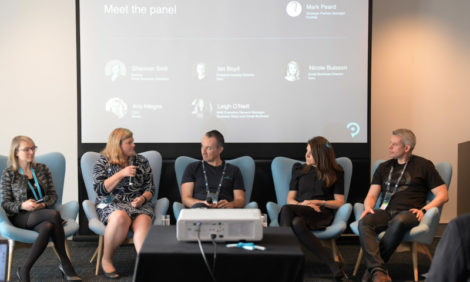
Xerocon panel: how partners are helping close the $80 billion funding gap

A combination of richer customer data, more responsive banks, and partnerships with accountants may be the key to helping close an estimated $80 billion lending shortfall to Australian small businesses, said panel at Xerocon in Brisbane.
“There’s never been a better time to be an accountant, said Shannon Smit, director of SMART Business Solutions on Melbourne’s Mornington Peninsula. “You’re moving away from just doing tax returns to facilitating loans with highly responsive lenders.”
She gave the example of a small business client who called to say he had an order for a $50,000 shipment container of goods and needed funding right away.
“If that scenario had arisen a few years ago, it might have taken us a week to prepare his accounts and provide numbers to the bank, and two more weeks to receive a loan decision,” said Smit. “Now we can do the whole process in about an hour” with lenders such as NAB QuickBiz and Moula.
A recent Xero survey suggests that Australia’s small businesses would borrow as much as $80 billion over the next 12 months, if they could get the funding. One of the biggest points of friction was the loan application, which most small businesses said was onerous.
Technology is gradually changing that experience.
Lenders can connect to a small business’s Xero data through an API, or application programming interface. With the Xero customer’s consent, the API sends data for a paperwork-free loan application and an instant decision. Once approved, unsecured loans of up to $250,000 can be disbursed the same day.
“The benefit of the rich data available to us is that we can service segments in a much better capacity,” said Aris Allegos, CEO of Moula.
Lenders can view not just on a business’s current position but even cash flow forecasts that enable a confident and responsible lending decision. Smit turns to Xero-integrated apps like Futurli and Spotlight for forecasting.
“We’ll say to the bank, `These are the three months over the next year where we’ll have cash flow gaps because we’re importing hundreds of thousands of dollars in goods, and we may need your help,’” said Smit. “‘We may repay six weeks after borrowing from you, and we may need to borrow again in a few months.’”
Established businesses in particular turn to these type of loans, said Moula’s Allegos.
“In fact, our core businesses are ones that have been in operation for four to seven years – businesses that are effectively mainstream and established, particularly in services and the trades,” said Allegos.
It’s not unusual for businesses to encounter cash flow gaps. Xero Small Business Insights data shows that the percentage of businesses that are cash-flow positive varies throughout the year, fluctuating between roughly 45 percent and 55 percent.
“The real opportunity for banks is how we can partner with companies like Xero to better enable our customers to know how and what they need to do to seek investment,” said Leigh O’Neill, executive general manager for business direct and small business at NAB.
“One thing we know from conversations is that often customers don’t need as much money as they once did to grow their business,” said O’Neill. “There is often less comfort in taking on large amounts of debt, and they want to take that debt on for shorter periods of time. And they’re always seeking to make the process easier.”
With a combined effort, that will be increasingly possible, said Ian Boyd, Xero Australia’s director for financial web.
“One party alone can’t fix an $80 billion shortfall,” said Boyd. “It will require all the players in the financial ecosystem, and I’m confident we’re moving in the right direction.”
The post Xerocon panel: how partners are helping close the $80 billion funding gap appeared first on Xero Blog.
Source: Xero Blog






